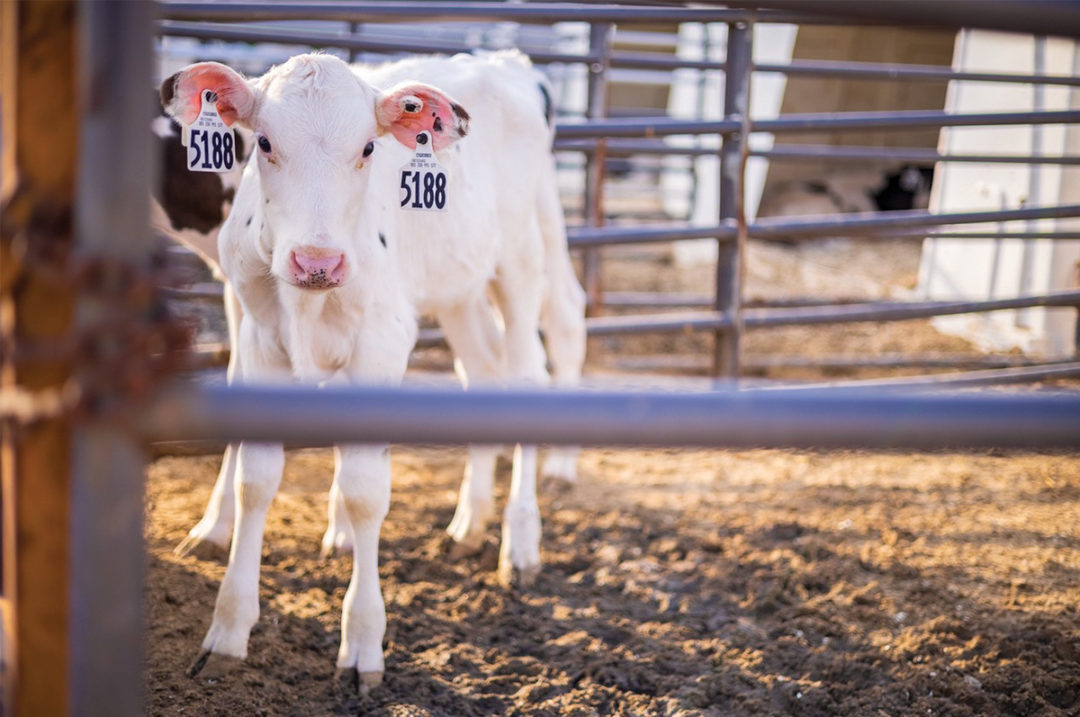With the arrival of cold weather comes the increased threat of bovine respiratory disease (BRD), or calfhood pneumonia, that often comes with it. Having a plan to prevent, diagnose and treat this common yet serious disease is key to help protect your dairy’s future. This statement may not be groundbreaking; dairy producers know the impact that BRD can have on a dairy animal’s life. Lower milk production, older age at first calving and reduced average daily gain (ADG) are just a few implications of a dairy heifer fighting the disease in the first 90 days of life. What’s more, calfhood chronic BRD cases can lead to cows with limited lung capacity and decreased longevity. These realities make preventative measures within a dairy’s calf wellness program crucial.
What is important to overstate is that while farm teams care for their calves each day with superb management skills, BRD cannot be completely erased from an operation. This means that early diagnosis and treatment of calfhood pneumonia to avoid chronic infection is just as important as preventing it in the first place. Both effective prevention and treatment go hand in hand to help work toward improved animal welfare.
Catch BRD symptoms early and efficiently
Early detection and diagnosis of BRD can make a large difference in a dairy heifer’s road to recovery. Dairies can avoid chronic cases and retreatments, and help calves get back to a healthy path faster and avoid lifelong consequences. Work with your team to align on standard operating procedures for identification and diagnosis.
Training of identification
Ensure farm teams are thoroughly trained to identify initial symptoms of BRD such as cough, nasal and eye discharge, difficulty breathing and fever in calves. There are several resources available to help with training, and the University of Wisconsin-Madison Calf Health Scoring Chart is a great example. Furthermore, dairies must work with their veterinarian to determine what symptoms and length of time of these symptoms warrant treatment.
Routine checks at feeding
One way to diagnose BRD early is to observe calves during feedings and identify those that may have a decreased appetite. This can be a telling sign that intervention is needed. Whether it’s feeding or a certain time of day, make sure there are daily checks on calves established.
Keep detailed records
It’s of utmost importance that observations of potential BRD symptoms or official diagnoses be logged and shared with farm teams for visibility. This helps ensure that each employee is on the same page and paying a careful eye to certain calves and the potential progression of symptoms. Whether it’s a paper trail or a collaborative software system, detailed records are a must.
Considerations in BRD treatment
While early diagnosis of BRD can help with the overall effectiveness of treatment, there are also considerations for the types of antibiotic therapy that could be used. Dairies should work with their veterinarian to determine the right fit for their operation.
Type of antibiotic therapy
Depending on the type of BRD pathogen a dairy must treat, the type of treatment may vary. However, an antibiotic therapy that treats all four major pathogens, Mannheimia haemolytica, Pasteurella multocida, Histophilus somni and Mycoplasma bovis, is helpful. In addition, using treatment with fever control, such as an NSAID, can help a dairy animal feel better and improve well-being.
Duration of antibiotic therapy
A longer-acting antibiotic treatment can increase the chance of successful treatment. This type of treatment allows a dairy calf’s immune system anywhere from 10 to 14 days to recover, whereas a shorter-acting antibiotic could leave a calf’s system in a matter of days which may lead to costs of retreatment and labour, thus affecting a dairy heifer’s overall potential. With longer-acting antibiotic therapy, it’s important to be patient and monitor the calf throughout the duration of the treatment. For example, a dairy heifer that received a long-acting antibiotic treatment with fever control may have a pep in its step the first few days but still exhibit symptoms of BRD later on. Allow the treatment to work through the post-treatment interval and evaluate with your veterinarian from there.
Overall, a longer-acting antibiotic with fever control can help ensure judicious use of resources and provide a successful first treatment. What’s key to this, however, is catching those BRD symptoms early and quickly to nip the disease in the bud. A well-developed plan for BRD management, including strong prevention practices and early diagnosis and treatment, can get calves back on track to a healthy path and a productive future.









